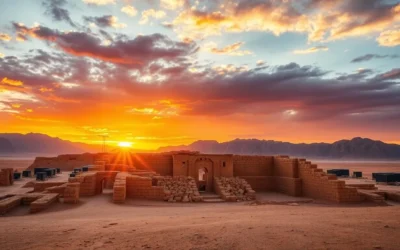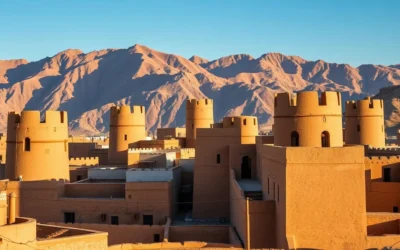Rising dramatically from the floor of Wadi Hadhramaut, Shibam’s towering mud-brick skyscrapers have earned it the nickname “Manhattan of the Desert.” This 1,700-year-old walled city contains over 500 tower houses, some reaching 11 stories high, making it the world’s oldest example of urban vertical construction. A UNESCO World Heritage site since 1982, Shibam represents one of humanity’s most remarkable architectural achievements—buildings made entirely of mud that have withstood the test of time for centuries.
Getting There & Planning Your Journey
Reaching Shibam requires careful planning due to Yemen’s ongoing political situation. Most travelers arrive via Seiyun Airport (the closest airport to Shibam) with connections through Cairo, Dubai, or Amman. Alternatively, some visitors enter through the Yemen-Oman border crossing at Surfeet, though this requires proper documentation and local assistance.
Due to the complex travel situation, most visitors arrange their journey through specialized tour operators familiar with Yemen. A valid Yemeni visa is essential and typically requires an invitation letter from a registered Yemeni tour company. The journey from Seiyun to Shibam takes approximately 30 minutes by car.
Best Time to Visit Shibam

The ideal time to visit Shibam is during the cooler months from October to March. During this period, temperatures are pleasant, ranging from 20°C to 28°C (68°F to 82°F) during the day and cooler at night. This makes exploring the narrow streets and climbing the city’s towers much more comfortable.
Summer months (April to September) bring intense heat with temperatures regularly exceeding 35°C (95°F), making sightseeing challenging. The region can also experience occasional flash floods during the rainy season (July-August), which pose risks to the mud-brick structures.
| Season | Months | Temperature | Conditions | Recommendation |
| Fall | October-November | 20-28°C (68-82°F) | Mild, dry | Excellent |
| Winter | December-February | 15-25°C (59-77°F) | Cool, pleasant | Ideal |
| Spring | March-April | 22-32°C (72-90°F) | Warming up | Good |
| Summer | May-September | 30-40°C (86-104°F) | Very hot, occasional rain | Challenging |
Getting Around Locally
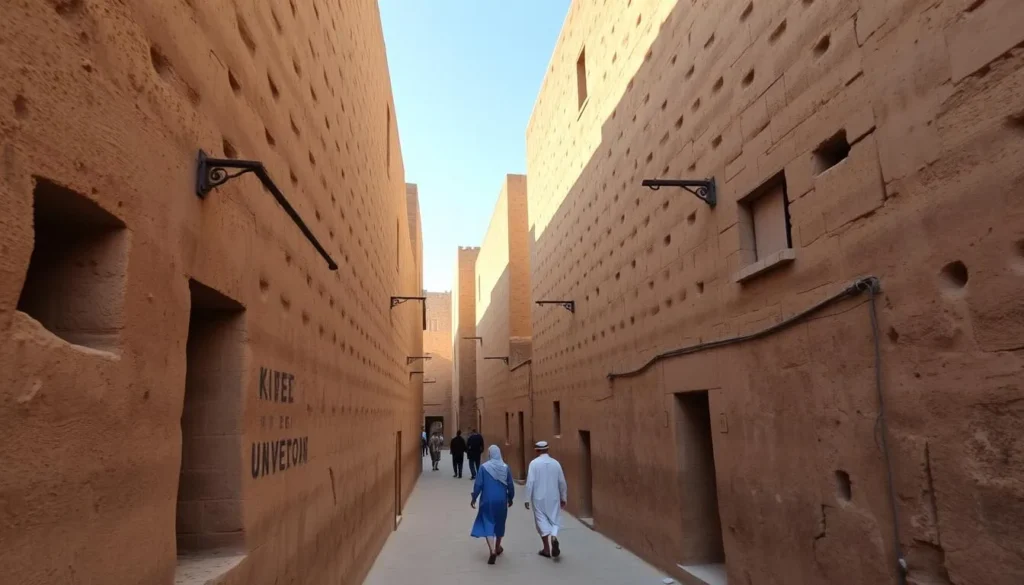
Shibam’s walled city is entirely pedestrian, with narrow alleyways winding between the towering mud-brick buildings. The compact nature of the city makes it perfect for exploration on foot. Cars can only reach the main gates, after which you must continue walking.
For travel between Shibam and nearby cities like Seiyun and Tarim, local taxis are readily available. However, most visitors travel with a guide and driver as part of an organized tour, which simplifies logistics and provides valuable cultural context.
If you’re staying in the region for several days and wish to explore the broader Wadi Hadhramaut area, having a dedicated vehicle with a local driver is recommended. Self-driving is possible but challenging due to checkpoints and the need for local knowledge.
Where to Stay

While Shibam itself has limited accommodation options, nearby Seiyun (15 km away) offers several hotels ranging from basic to comfortable. Most visitors base themselves in Seiyun and make day trips to Shibam and other attractions in the Hadhramaut Valley.
Popular options in Seiyun include Hotel Seiyun, which offers clean rooms with air conditioning and traditional Yemeni architecture, and Hadramout Hotel, which provides more modern amenities. Some tour operators can also arrange homestays with local families for a more authentic experience.
For those seeking higher-end accommodations, the historic Palace Hotel in Seiyun offers a unique experience in a converted palace with traditional Hadhrami architecture and modern comforts.
Dining & Local Cuisine

Hadhramaut cuisine is a highlight of any visit to Shibam, offering unique flavors distinct from other Yemeni regions. The most famous local dish is mandi, slow-cooked meat (usually lamb or chicken) with rice, prepared in an underground oven that gives it a smoky flavor. It’s typically eaten communally from a large platter.
Other local specialties include:
- Fahsa – a hearty meat stew with fenugreek foam
- Saltah – considered Yemen’s national dish, a meat-based stew with vegetables and hulba (fenugreek sauce)
- Bint al-sahn – a layered honey cake that’s perfect with Yemeni tea
- Shakshouka – eggs poached in a sauce of tomatoes, peppers, and spices
Most restaurants in Shibam and Seiyun are simple establishments catering to locals. Tea houses are social hubs where you can enjoy sweet Yemeni tea or coffee while watching local life unfold. Some teahouses in Shibam claim to have been serving customers in the same location for centuries.
Attractions, Sightseeing & Activities
The Walled City of Shibam
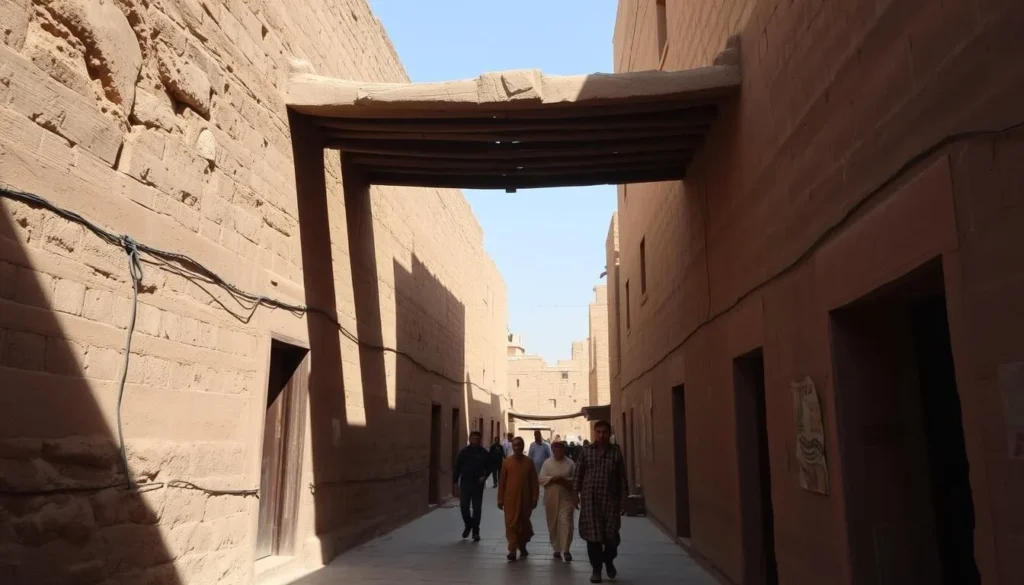
The heart of any visit to Shibam is exploring the walled city itself. Enter through the main gate and wander the maze-like alleyways between towering mud-brick buildings. The city’s layout has remained largely unchanged for centuries, creating a living museum of traditional Yemeni architecture and urban planning.
Shibam Museum & Handicraft Center
Located near the northern boundary of the walled city, this museum offers insights into traditional Hadhrami architecture, culture, and crafts. The building itself is a traditional tower house, allowing visitors to experience the interior layout of these remarkable structures. The roof provides excellent views across the city and surrounding wadi.
Jameh Mosque (Great Mosque)

Dating back to the 10th century, this is Shibam’s oldest and most important mosque. Its distinctive white exterior and baroque-style minaret make it stand out among the mud-colored buildings. While non-Muslims typically cannot enter, the exterior is worth admiring for its historical significance.
Sunset Viewpoint at Jabal Khidba
For the most spectacular views of Shibam, head to the viewpoint on Jabal Khidba just before sunset. From this elevated position, you can watch the entire city glow golden in the late afternoon light while listening to the melodic call to prayer echo across the valley. This is undoubtedly one of the most magical experiences in Yemen.
Museums, Cultural Spots & Festivals
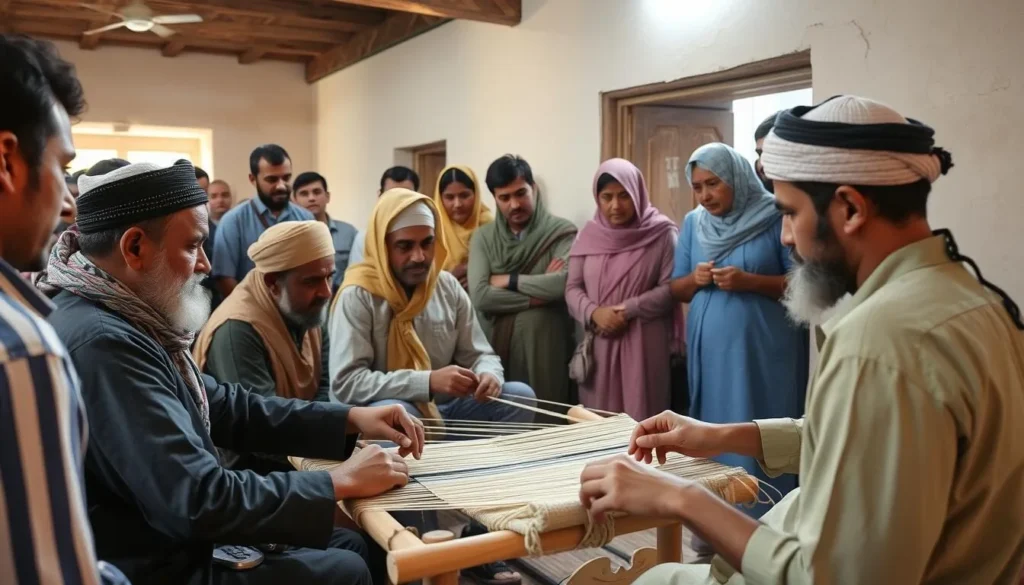
Shibam Center of Yemeni Dress Weaving
This small workshop preserves the traditional craft of weaving fouta, the distinctive wrap-around garments worn by Yemeni men. Visitors can observe artisans working on traditional looms and learn about the intricate patterns and techniques that have been passed down through generations.
Alibaba Treasure Shop

Known for its collection of traditional Hadhrami silver jewelry, antique wooden doors, and chests with intricate carvings, this shop offers a glimpse into the region’s rich artistic heritage. Even if you’re not shopping, it’s worth visiting to appreciate the craftsmanship.
Cultural Festivals
If your visit coincides with Eid celebrations (either Eid al-Fitr or Eid al-Adha), you may witness traditional dances, music performances, and festive gatherings in Shibam and surrounding towns. These occasions offer rare insights into local customs and celebrations, though dates vary each year according to the Islamic calendar.
Sports, Nature & Outdoor Experiences
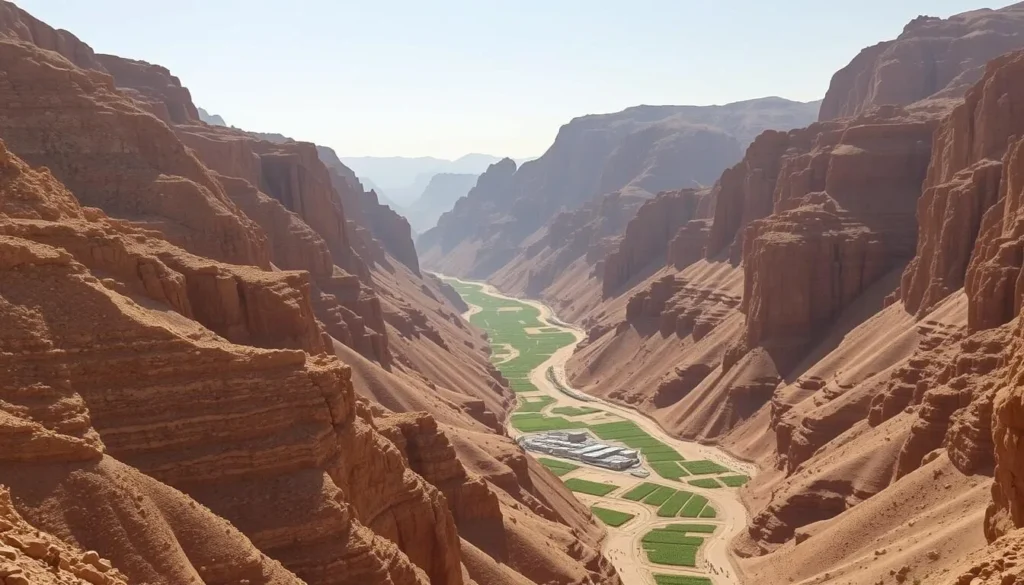
Wadi Hadhramaut Exploration
The broader Wadi Hadhramaut offers stunning landscapes and several other historic settlements worth exploring. Consider day trips to:
- Tarim – known for its 365 mosques and impressive Al-Muhdar Mosque with its 53-meter minaret
- Wadi Daw’an – a stunning side valley with more cliff-hugging villages and lush palm groves
- Al-Hajarayn – a dramatic cliff-top city with buildings perched on seemingly impossible slopes
Desert Experiences

The fringes of the Empty Quarter (Rub’ al Khali), the world’s largest sand desert, can be reached on day trips from Shibam. Some tour operators offer desert experiences including camel rides and camping under the stars, providing a stark contrast to the urban density of Shibam.
Hiking
The mountains surrounding Wadi Hadhramaut offer hiking opportunities with spectacular views. Local guides can lead you on trails ranging from easy walks to more challenging climbs. Early morning or late afternoon hikes are recommended to avoid the midday heat.
Safety, Etiquette & Local Customs

Safety Considerations
Yemen’s ongoing political situation requires careful planning and awareness. Most visitors to Shibam travel with registered tour companies that provide security arrangements and necessary permits. The Hadhramaut region, where Shibam is located, is generally more stable than other parts of Yemen, but conditions can change rapidly.
Always follow your guide’s instructions, particularly regarding photography at checkpoints and sensitive locations. Stay updated on travel advisories from your country’s foreign office before and during your trip.
Dress Code & Etiquette
Yemen is a conservative Muslim country, and respectful dress is essential. Women should wear loose-fitting clothes covering arms and legs, and a headscarf is recommended (some women choose to wear an abaya and niqab while in Yemen). Men should avoid shorts and sleeveless shirts.
Additional etiquette tips:
- Ask permission before photographing people, particularly women
- Remove shoes when entering homes or mosques
- Eat with your right hand if dining traditionally
- Avoid public displays of affection
- During Ramadan, refrain from eating, drinking, or smoking in public during daylight hours
Local Customs

Yemeni hospitality is legendary, and you may be invited for tea or even a meal. Such invitations are genuine and accepting them is considered respectful. Tea houses are important social spaces where men gather to socialize, often while chewing khat (a mild stimulant leaf popular throughout Yemen).
While visitors aren’t expected to participate in khat chewing, understanding its cultural significance helps appreciate local customs. The afternoon slowdown in activity often coincides with khat-chewing sessions, which are an important part of social bonding.
Practical Travel Tips
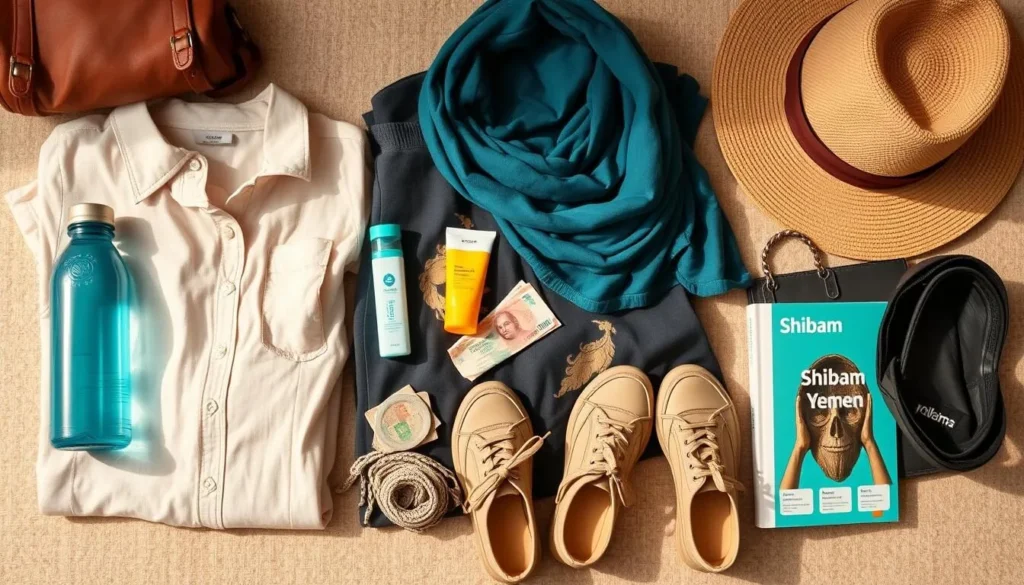
Currency & Money
The Yemeni Rial (YER) is the local currency. Bring sufficient cash as ATMs are unreliable or nonexistent in the region. US dollars are widely accepted and can be exchanged. Credit cards are rarely accepted outside major hotels in larger cities.
Communication
Purchase a local SIM card upon arrival for data and calls. Yemen Mobile and Sabafon are major providers. Internet access can be sporadic, so download offline maps and translation tools before your trip.
Health & Medicine
Bring all necessary medications as pharmacies may have limited supplies. Include a basic medical kit with remedies for stomach issues, pain relievers, and rehydration salts. Drink only bottled water and avoid raw vegetables and unpeeled fruits.
Packing Essentials
- Modest clothing covering shoulders, arms, and legs
- Headscarf for women
- Comfortable walking shoes for exploring the uneven streets
- Hat, sunglasses, and high-SPF sunscreen
- Power bank for charging devices during long journeys
- Small gifts from your home country for hosts or guides
- Wet wipes and hand sanitizer
Photography
Bring extra memory cards and batteries as replacements may be difficult to find. Be sensitive when photographing people and always ask permission first. Avoid photographing military checkpoints, government buildings, or anything that could be considered sensitive infrastructure.
Experience the Magic of Shibam

Shibam represents one of humanity’s most remarkable architectural achievements—a city that has stood for centuries against the harsh desert environment through ingenious building techniques and community preservation efforts. Walking through its narrow streets feels like stepping back in time while simultaneously appreciating the forward-thinking urban planning that predated modern skyscrapers by over a millennium.
Despite the challenges of traveling to Yemen in current times, those who make the journey to Shibam are rewarded with an unparalleled cultural experience and the warm hospitality of the Yemeni people. The memories of mud skyscrapers glowing golden at sunset, the echo of the call to prayer across the wadi, and the smiles of local children playing in ancient alleyways will stay with you long after your journey ends.
When stability returns to Yemen, Shibam stands ready to reclaim its rightful place among the world’s most extraordinary destinations. Until then, it remains a testament to human ingenuity and cultural resilience—a treasure worth the effort to experience.
The above is subject to change.
Check back often to TRAVEL.COM for the latest travel tips and deals.

